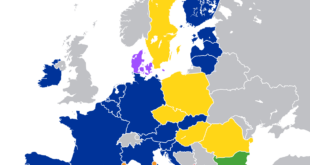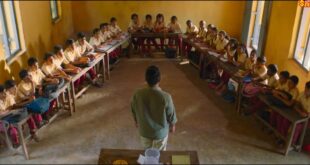- Recently, the Reserve Bank of India (RBI) announced a series of measures to support the nation’s fight against the second wave of Covid-19 infections
- The measures form the first part of a calibrated and comprehensive strategy against the pandemic
- Earlier in 2020 also the RBI took measures to help deal with the economic fall out of the pandemic.
Important points:
- Term Liquidity Facility of Rs. 50,000 crore with tenure of up to 3 years, at repo rate, to ease access to credit for providers of emergency health services.
- Under the scheme, banks will provide fresh lending support to a wide range of entities, including vaccine manufacturers, importers/suppliers of vaccines and priority medical devices, hospitals/dispensaries, pathology labs, manufacturers and suppliers of oxygen and ventilators, and logistics firms.
- These loans will continue to be classified under priority sector till repayment or maturity, whichever is earlier.
- This lending facility will be available up to 31st, March 2022.
- RBI would conduct special three-year long-term repo operations (SLTRO) of Rs. 10,000 crore at repo rate for small finance banks (SFBs).
- Long Term Repo Operation is a tool under which the central bank provides one-year to three-year money to banks at the prevailing repo rate, accepting government securities with matching or higher tenure as the collateral.
- The SFBs would be able to deploy these funds for fresh lending of up to Rs. 10 lakh per borrower.
- This is to provide further support to small business units, micro and small industries, and other unorganised sector entities adversely affected during the current wave of the pandemic.
Priority Sector Lending:
- Small Finance Banks (SFBs) are now permitted to regard fresh on-lending to Microfinance institutions (MFIs) with asset size up to Rs. 500 crore, as priority sector lending.
- This facility will be available up to 31st, March 2022.
- To further incentivize inclusion of unbanked Micro, Small and Medium Enterprises (MSMEs) into banking system, exemption provided in February, 2021 wherein scheduled banks were allowed to deduct credit given to new MSME borrowers from Net Time & Demand Liabilities for calculation of Cash Reserve Ratio (CRR), is now extended to 31st December, 2021.
Stress Resolution Framework 2.0:
- This Framework is to relieve stress faced by most vulnerable categories of borrowers – namely individuals, borrowers and MSMEs.
- Individuals, borrowers and MSMEs who have not availed any restructuring will be eligible to be considered under Resolution Framework 2.0.
- For individuals and small businesses who have availed restructuring of loans under Resolution Framework 1.0, lending institutions can now extend residual tenure up to a total period of 2 years.
- Lending institutions are now permitted to review working capital sanction limits, as a one-time measure.
- In order to mitigate the pandemic related stress on banks and as a measure to enable capital conservation, banks are being allowed to utilise 100% of floating provisions held by them as 31st December, 2020, for making specific provisions for Non-Performing Assets (NPAs)
- Countercyclical provisioning buffers and floating provisions broadly refer to the specific amount that banks need to set aside in good times above the mandatory provisioning requirement as prescribed by RBI, these are used only in contingencies or extraordinary times of economic or system-wide downturns. Banks have started building such reserves since 2010.
Relaxation of Overdraft Facility for States:
- To enable the State governments to better manage their fiscal situation in terms of their cash flows and market borrowings, the maximum number of days of overdraft (OD) in a quarter is being increased from 36 to 50 days and the number of consecutive days of OD from 14 to 21 days.
- This facility is available up to 30th September, 2021.
- Earlier, the Ways and Means Advance (WMA) limits of states were enhanced.
- The RBI has also decided to extend the scope of video KYC (know-your-customer) or V-CIP (video-based customer identification process) for new categories of customers such as proprietorship firms, authorised signatories and beneficial owners of legal entities.
Way Forward
- In order to match the devastating speed of the virus, swift, wide-ranging, sequenced and well-timed actions which reach out to various sections, including the most vulnerable, have to be taken.
- India has mounted a valiant defence to ramp up vaccines and medical support while fighting rise in infections and mortalities in the second wave, after having flattened infections. Shoring up livelihoods and restoring normalcy in access to workplaces, education and incomes becomes an imperative in such a situation.
SOURCE: THE HINDU , THE ECONOMIC TIMES ,MINT
 Chinmaya IAS Academy – Current Affairs Chinmaya IAS Academy – Current Affairs
Chinmaya IAS Academy – Current Affairs Chinmaya IAS Academy – Current Affairs



